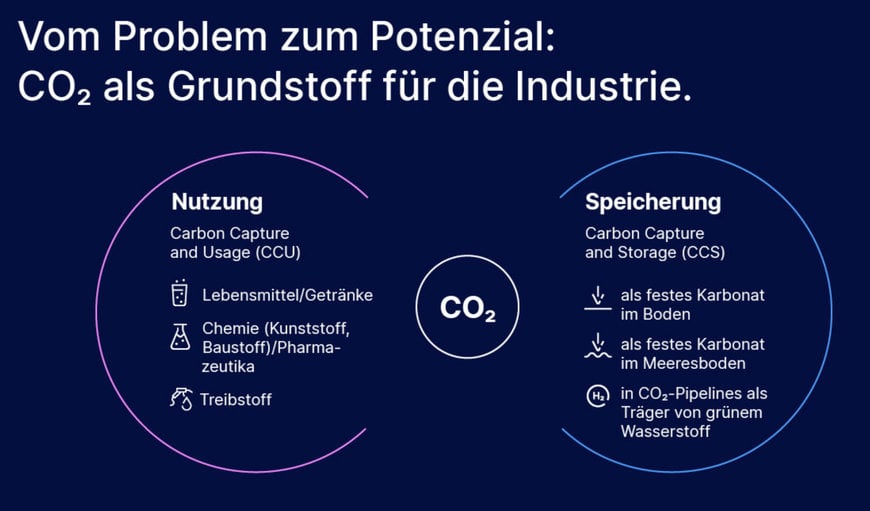www.industryemea.com
16
'23
Written on Modified on
GEA SOLUTIONS PAVE THE WAY FOR DECARBONIZING THE CEMENT INDUSTRY
GEA, the international technology group, has developed an extensive carbon capture portfolio to push forward the decarbonization of carbon-intensive industries both swiftly and cost-effectively.

GEA CEO Stefan Klebert positions the Group as a trailblazer in this field. “‘Engineering for a better world’ signifies our dedication to advancing the sustainable development of key industries with our plants and solutions. With this ambitious approach, we are helping our customers to massively reduce their carbon footprint.” GEA’s carbon capture portfolio integrates proven technologies. These solutions recover waste heat, pretreat gas, capture CO₂ and prepare it either for utilization or storage.

Captured carbon can be stored (CCS) or utilized for industrial processes (CCU). Source: GEA
Practical trials at Phoenix Zementwerke pilot plant
With a production capacity of 500,000 tons of cement per year, the Phoenix Zementwerke plant in Beckum emits an estimated 1,000 tons of carbon dioxide every day. Data on carbon emissions in the exhaust air from the plant is now being gathered over several months of testing. Based on this data, GEA will then scale up and refine the system for larger emission volumes. The options available encompass both carbon capture and storage (CCS) as well as carbon capture and utilization (CCU). “We view carbon capture as an exceptionally promising technology,” says Marcel Gustav Krogbeumker, Managing Director of Phoenix Zementwerke. “Leveraging GEA’s decades-long expertise in exhaust gas treatment, I am highly optimistic that, together, we will engineer and implement a solution capable of capturing at least 90 percent of our emissions.”
Standardized systems for rapid, cost-efficient entry
GEA’s carbon capture portfolio features four plant sizes, with the dimensioning of each dependent upon the waste heat generated in carbon-emitting production processes. Once adapted to the production plant in question, these systems can remove emitted carbon with minimal to zero energy input.
The evident need for action and the market’s readiness to invest indicate that carbon dioxide can be turned from a problem pollutant into valuable input for reuse in other industrial processes. “Every customer has distinct opportunities for carbon utilization. This is why it’s crucial to draw up a comprehensive site plan that explores the options for carbon utilization and the requisite infrastructure,” explains Dr. Felix Ortloff, Senior Director GEA Carbon Capture Solutions. “In the long run, this will lead to a new sector of the economy centered around CO₂.”
www.gea.com

